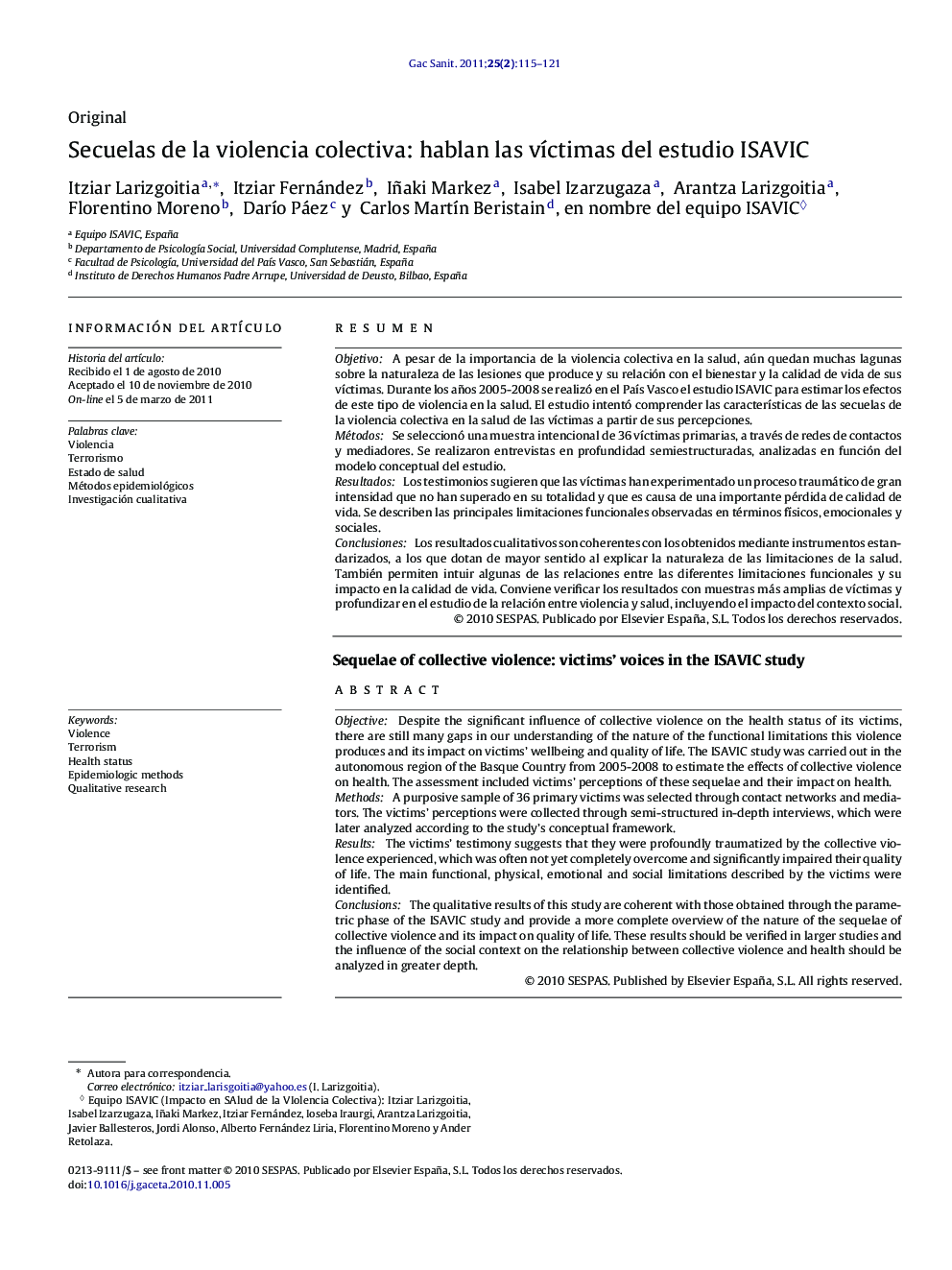| کد مقاله | کد نشریه | سال انتشار | مقاله انگلیسی | نسخه تمام متن |
|---|---|---|---|---|
| 1074002 | 949809 | 2011 | 7 صفحه PDF | دانلود رایگان |

ResumenObjetivoA pesar de la importancia de la violencia colectiva en la salud, aún quedan muchas lagunas sobre la naturaleza de las lesiones que produce y su relación con el bienestar y la calidad de vida de sus víctimas. Durante los años 2005-2008 se realizó en el País Vasco el estudio ISAVIC para estimar los efectos de este tipo de violencia en la salud. El estudio intentó comprender las características de las secuelas de la violencia colectiva en la salud de las víctimas a partir de sus percepciones.MétodosSe seleccionó una muestra intencional de 36 víctimas primarias, a través de redes de contactos y mediadores. Se realizaron entrevistas en profundidad semiestructuradas, analizadas en función del modelo conceptual del estudio.ResultadosLos testimonios sugieren que las víctimas han experimentado un proceso traumático de gran intensidad que no han superado en su totalidad y que es causa de una importante pérdida de calidad de vida. Se describen las principales limitaciones funcionales observadas en términos físicos, emocionales y sociales.ConclusionesLos resultados cualitativos son coherentes con los obtenidos mediante instrumentos estandarizados, a los que dotan de mayor sentido al explicar la naturaleza de las limitaciones de la salud. También permiten intuir algunas de las relaciones entre las diferentes limitaciones funcionales y su impacto en la calidad de vida. Conviene verificar los resultados con muestras más amplias de víctimas y profundizar en el estudio de la relación entre violencia y salud, incluyendo el impacto del contexto social.
ObjectiveDespite the significant influence of collective violence on the health status of its victims, there are still many gaps in our understanding of the nature of the functional limitations this violence produces and its impact on victims’ wellbeing and quality of life. The ISAVIC study was carried out in the autonomous region of the Basque Country from 2005-2008 to estimate the effects of collective violence on health. The assessment included victims’ perceptions of these sequelae and their impact on health.MethodsA purposive sample of 36 primary victims was selected through contact networks and mediators. The victims’ perceptions were collected through semi-structured in-depth interviews, which were later analyzed according to the study's conceptual framework.ResultsThe victims’ testimony suggests that they were profoundly traumatized by the collective violence experienced, which was often not yet completely overcome and significantly impaired their quality of life. The main functional, physical, emotional and social limitations described by the victims were identified.ConclusionsThe qualitative results of this study are coherent with those obtained through the parametric phase of the ISAVIC study and provide a more complete overview of the nature of the sequelae of collective violence and its impact on quality of life. These results should be verified in larger studies and the influence of the social context on the relationship between collective violence and health should be analyzed in greater depth.
Journal: Gaceta Sanitaria - Volume 25, Issue 2, March–April 2011, Pages 115–121